Trump tears up political rule book with media ad strategy
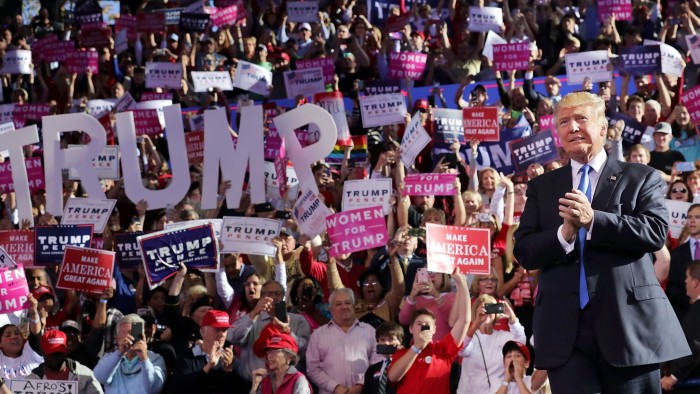
Roula Khalaf, Editor of the FT, selects her favourite stories in this weekly newsletter.
On Friday Donald Trump unveiled a two-minute television advert in which he rails against the political establishment, juxtaposing clips of Hillary Clinton, Barack Obama, George Soros and Janet Yellen against grim images of empty US factories.
“The only thing that can stop this corrupt machine is you,” Mr Trump says against a backdrop of dark clouds and sombre music.
The unconventionally long advert serves as Mr Trump’s “positive closing message to American voters”, says Jason Miller, a Trump campaign adviser. The campaign says it spent $4m to air the message during Sunday NFL games and entertainment shows such as “The Voice” in the final days of the race, across nine battleground states including Florida and Ohio.
It was a last-ditch push by the Trump campaign to catch up with Hillary Clinton on television. Until recently Mr Trump’s campaign had eschewed TV in favour of digital adverts and free media attention, with the goal of reaching voters in the place where Mr Trump operates best: social media.
Mr Trump has prided himself on tearing up the political rule book, relying instead on free media coverage — estimated by MediaQuant to be worth $4.6bn — to spread his message.
“Our expenditures on advertising, our expenditures on people, our expenditures on everything are a tiny fraction . . .” Mr Trump told a rally last month. “If you can spend less and be winning, that’s a positive thing, right?”
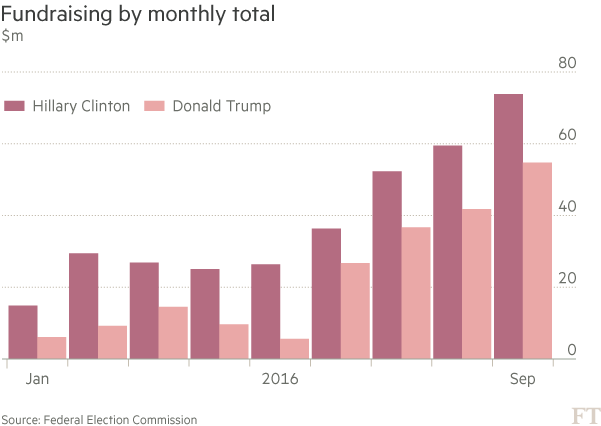
Mrs Clinton has raised more and spent more than her opponent throughout the White House race, helping preserve her narrow lead in the polls.
Over the course of the race she has raised $513m and spent $450m, to Mr Trump’s $254m and $239m, according to the latest reports on campaign fundraising filed with the Federal Election Commission.
The candidates also diverged starkly on where they spent their money. Mrs Clinton and her allies have built a robust campaign operation, flooding televisions in swing states with advertising, while the Trump campaign has kept its attention online, where Mr Trump has grown a loyal 25m-strong following across Facebook and Twitter.
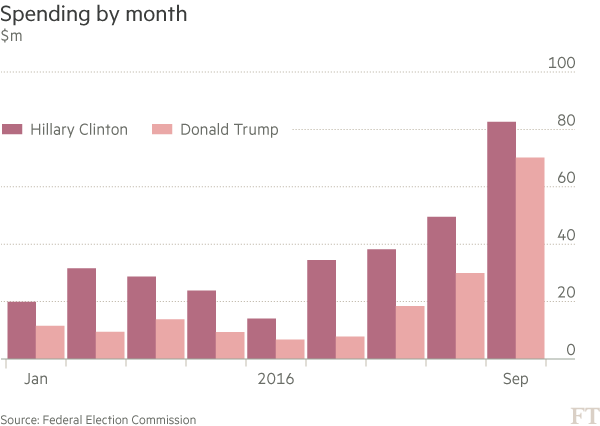
Through October 19 Mrs Clinton’s camp spent about $10m of her vast $244m of ad buys on digital, while Mr Trump’s campaign spent $57m on digital advertising out of a total $129m in spending, according to an FT analysis of FEC data.
Mr Trump’s campaign ramped up its push in the final stretch, spending $49m in the first half of October with $35m of it going towards a TV advertising blitz targeted at swing states — nearly matching the $40m from the Clinton campaign.
However, Mr Trump is still set to finish the race grossly underspending his opponent.
As of mid-October the number of adverts run by both candidates and their allied groups was less than half of the level seen in 2012’s race, suggesting that “the larger media narrative has been more important than exposure to advertising in moving voters”, said Travis Ridout of the Wesleyan Media Project.
Given Mr Trump’s “historically low fundraising numbers”, the Center for Responsive Politics predicts the candidates will have spent $1.2bn in total on the 2016 White House race — a $190m drop from their 2012 counterparts when adjusting for inflation. Analysts now expect $3.65bn in election television advertising spending this year including congressional races, below the $3.8bn spent on 2012’s race — the first such decline in decades.
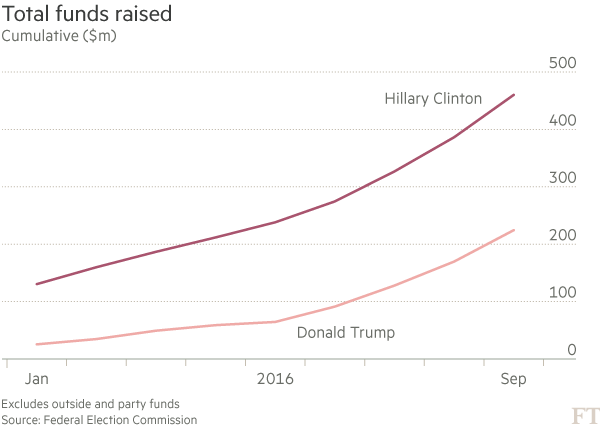
TV groups hurt by Mr Trump’s thin advertising are keen to dismiss him as a one-off. “Obviously our expectations did not pan out and there’s disappointment,” says Steve Lanzano, president of the Television Bureau of Advertising, which represents broadcast groups and nearly 700 local stations.
Live event: Making sense of the US election
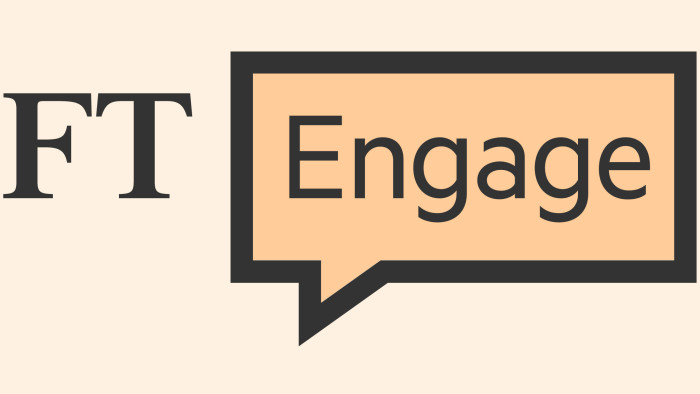
Join FT commentators in London on November 10 to discuss the state of US politics after the presidential election
However, Mr Trump’s rise is “not a referendum on the power of television”, he says. “It’s a Donald Trump phenomenon. I don’t think we’ll get another reality show candidate like this.”
Other observers are less sure.
“He’s mixed the landscape, and these things don’t just reset,” says Bill Day, a consultant to broadcasters, adding that the Trump phenomenon “wakes [networks and politicians] up to how little control they’ve had all along”.
Comments